The trip
The observation of this eclipse is part of a 5 days trip in Egypt that I organized for a group of 18 persons with help of Best Way Travel - Egypt egyptian travel agency. This trip gave us opportunity to visit Giza pyramids, Cairo, Alexandria and north coastal towns westward from Alexandria.
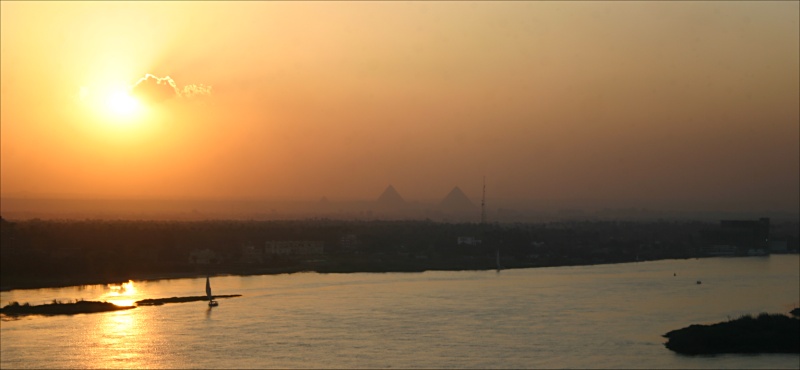
The observation camp
Our camp is about
170 m over sea level (31° 34' 55"S, 25° 07' 36"E) on the shelf
dominating the pretty town of Saloum, near the libyan boarder. We are
distant a little less than 10 km from the center of totality path (red line on
the map).
The camp of tents was built and protected by egyptian army. The construction
began two months before eclipse date.
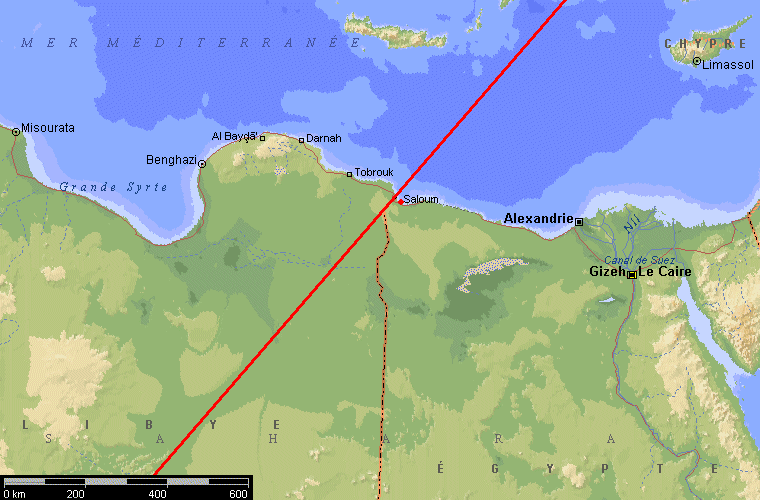
After an eventful drive from Alexandria (the accelerator cable of our bus was broken on way), we arrive during the night, on march 28th evening and take place in our tents under protection of egyptian army.
On march 29th morning, the air is cold and wet, the soil is muddy and the camp is covered with haze. Its getting light at 4H10 UT (6H10 local time), and the sun hardly shines through a thick fog curtain.
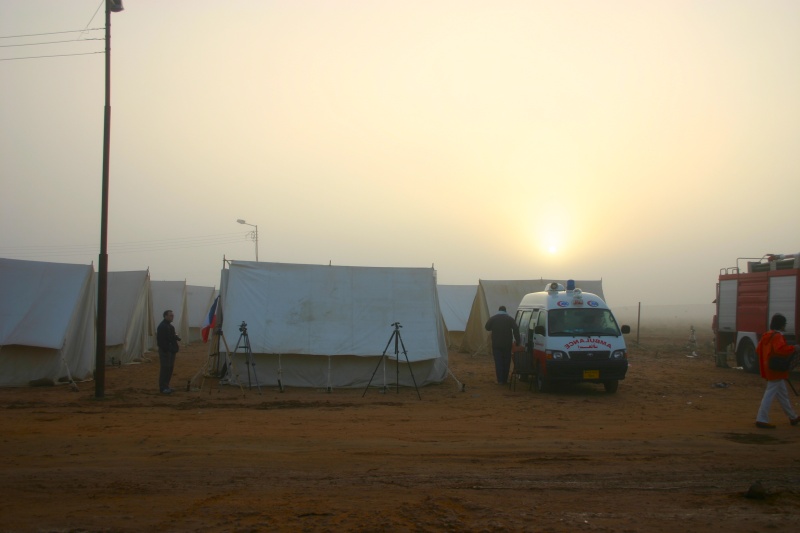
Haze is long to disappear, which is worrying for us. Low clouds are passing over the camp to north-east direction. At about 10H20 local time, the cloudy layer finally vanishes under a clear blue sky. Our instruments are ready and french flag is settled. The show will soon begin ....
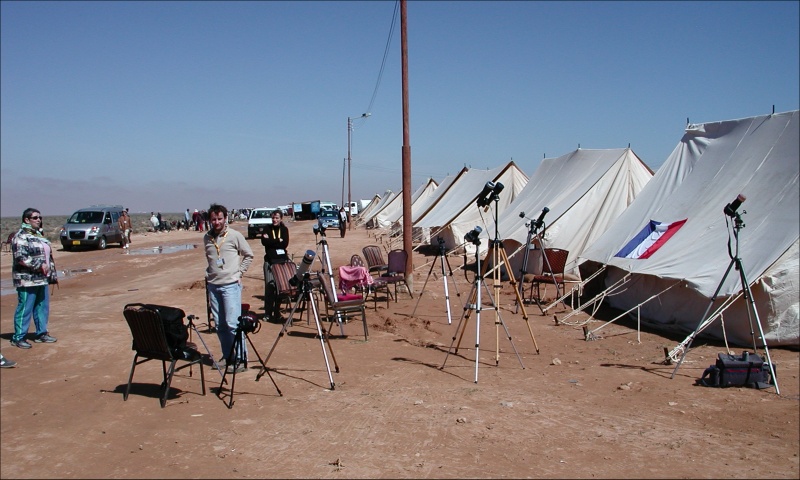
Photographic equipment
My equipment is composed of a CANON EOS300D digital camera with Sigma 150-400 mm zoom lens and Astrosolar filter of density 5 for partial phases. All this is fixed on a motorized EQ1 mount.
In order to avoid battery shortage during the 160 minutes of the eclipse, the EOS300D is supplied by a 12V 4AH lead acid battery and a DC DC converter.
During the eclipse, the zoom focal length is permanently set at 400 mm à F/5.6 and camera sensitivity is set at 200 ISO. The periodicity of the capture is managed with a Pocket Shutter sequencer.
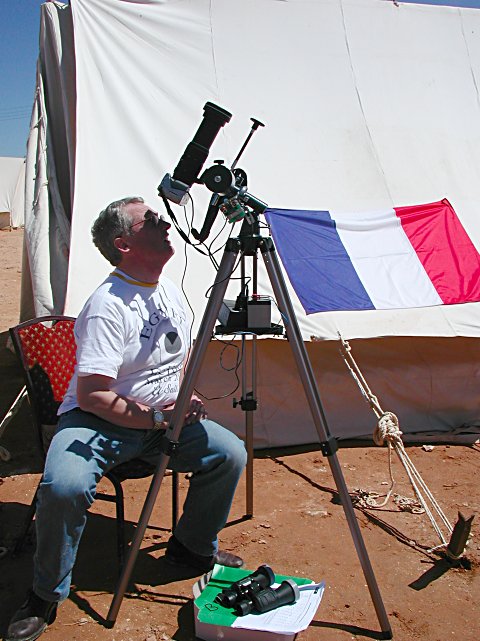
Solar disc just before eclipse begins
As the sun is in a low activity state, we are expecting a smooth solar surface. Despite of this quiet state, we are lucky to observe near the limb a group of three spots that will improve the sight during most of partial phases (click on picture to enlarge).
First contact
First contact occurs at 9H20 UT or 11H20 local time (click on picture to enlarge).
Moon at half way
At 9H59 UT or 11H59 local time, the lunar limb reaches the center of the sun (click on picture to unlarge).
It's time now to observe small crescents on the ground. Unfortunately, we are in the desert... far from any shady tree ! ... Marie-Claude has already prepared a punched carboard. A white towel is laid on the ground and the trick is ready, for the greatest amazement of egyptian soldiers !
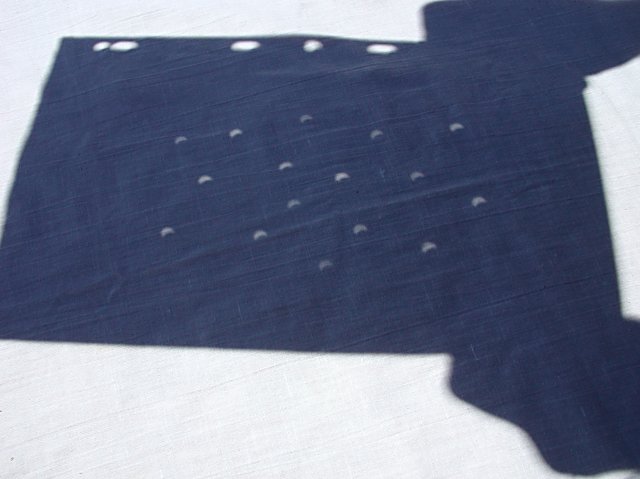
Second contact
Second contact occurs at 10H38 UT or 12H38
local time. Filters are removed from instruments and the great show begins ....Here
is a picture showing prominences and Bayley beads after second contact, exposure
1/2500 at 200 ISO (click on picture to enlarge).
 Movie including this picture (800 x600 AVI
XVID compression)
Movie including this picture (800 x600 AVI
XVID compression)
This movie is composed of four pictures captured 5 seconds apart. Notice the wavy lunar mountains appearing in front of the chromosphere, right of the Bailey beads.
Horizon
We are now surrounded by crepuscular colours.
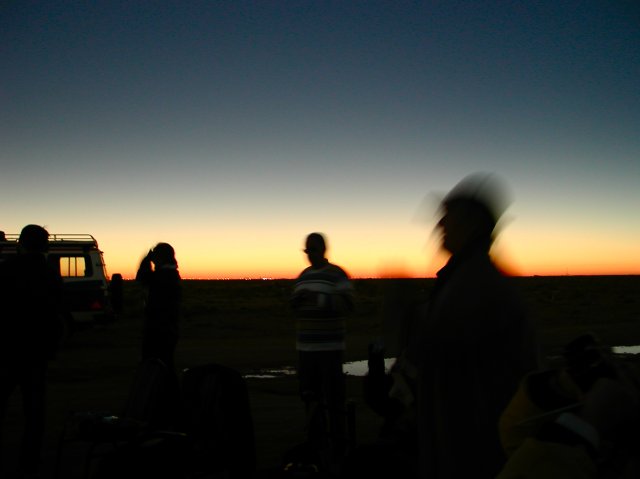
The corona
With naked eye, the corona looks like an amazing butterfly. This picture is a combination of 10 pictures with exposure time varying from 1/1000 to 1/6th second at 200 ISO. A wavelet processing with IRIS software reveals the corona structure up to 3 solar radius (click on picture to enlarge).
 Movie of the corona (920 x700 AVI
XVID compression)
Movie of the corona (920 x700 AVI
XVID compression)
This movie shows the corona extension increasing as exposure time varies from 1/320 to 1/4th second at 200 ISO.
Earth shine
With an exposure time of 1/4 second at 200 ISO, the EOS300D sensor is able to capture the light of earth shine. On this picture, the lunar disk is enhanced throug gamma and contrast improvement. The main lunar features are visible (click on picture to enlarge).
diameter comparison
These two superimposed pictures reveal the difference between sun diameter and moon diameter at eclipse time (click on picture to enlarge).
Third contact
4 minutes have elapsed and third contact occurs
at 10H40 UT or 12H40 locale time (click on picture to enlarge).
Unfortunately I forget to reduce exposure time to
1/2500 .... Hypnotised by the magnificence of the show, I am totally surprised
when the sun reappears ! The last moments of this eclipse are lost ... but
nevertheless recorded in my memory.
Now it's time to celebrate our success !
Sophie has a surprise for us ..... A bottle of champaign quickly shared among
members of the group and egyptian people (picture Denis Pierret).

Las contact
Last contact occurs at 12H00 UT or 14H00 local time (click on picture to enlarge).
In conclusion (picture Philippe Lopez)
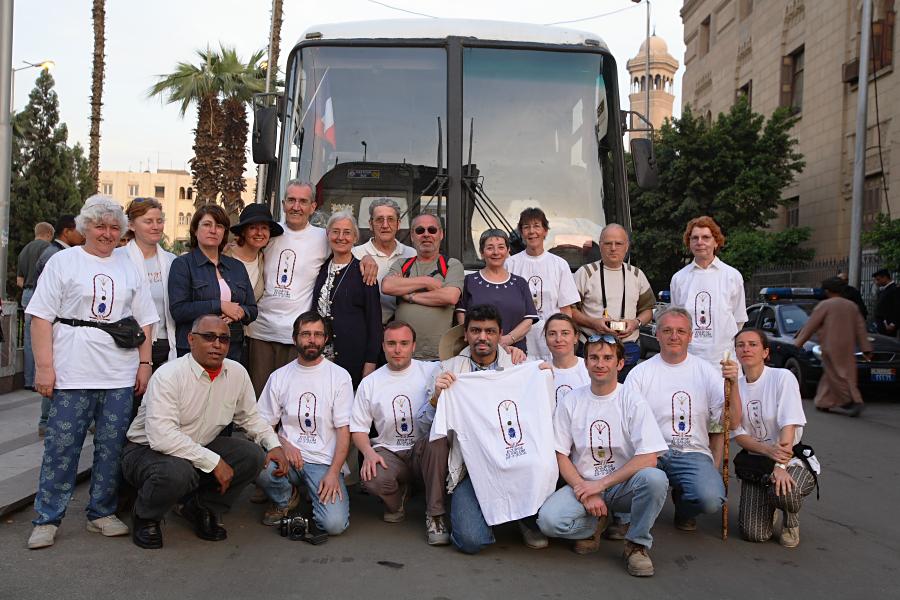
I am very grateful to :
- all members of the group who sympathetically
accepted to take part to this trip
- Best Way Travel - Egypt
whose efficiency was a great help during these five days
- our skilled (in traffic jam) driver Abdu for his kindness
- our excellent french-speaking guide Alaa
Yehia Ahmed (the best one !)
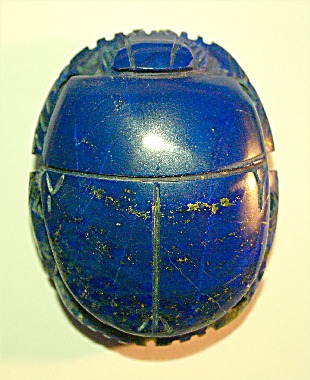
Some pictures by Denis Pierret
Some pictures by Francis Willm and others by the same author
Satellite movie of the eclipse